This 6-ingredient, 5-minute peanut sauce is perfect for stir fries, as a dipping sauce, or as a dressing on grain bowls! It uses pantry staples and is easy to customize.

I use this peanut sauce so often in cooking that I decided it needs its own page. It's basically the same sauce used in my spicy peanut sauce noodles recipe, and it's very similar to the dipping sauce I use with spring roll bowls.
Read on for recommended ingredients, substitutes, and tips. If you're looking for a peanut-free stir fry sauce, check out my vegetarian stir fry sauce recipe.
Recipe features
- Quick & easy: Ready in just 5 minutes using pantry staples.
- Flavors: Salty, savory, and pourable with a hint of spice.
- Easy to customize: Can be made using natural or regular peanut butter and smooth or chunky peanut butter. Also includes options for spicy peanut sauce or regular peanut sauce.
- Versatile: Great as a dipping sauce, stir fry sauce, or as a dressing on quinoa salad.
Ingredients
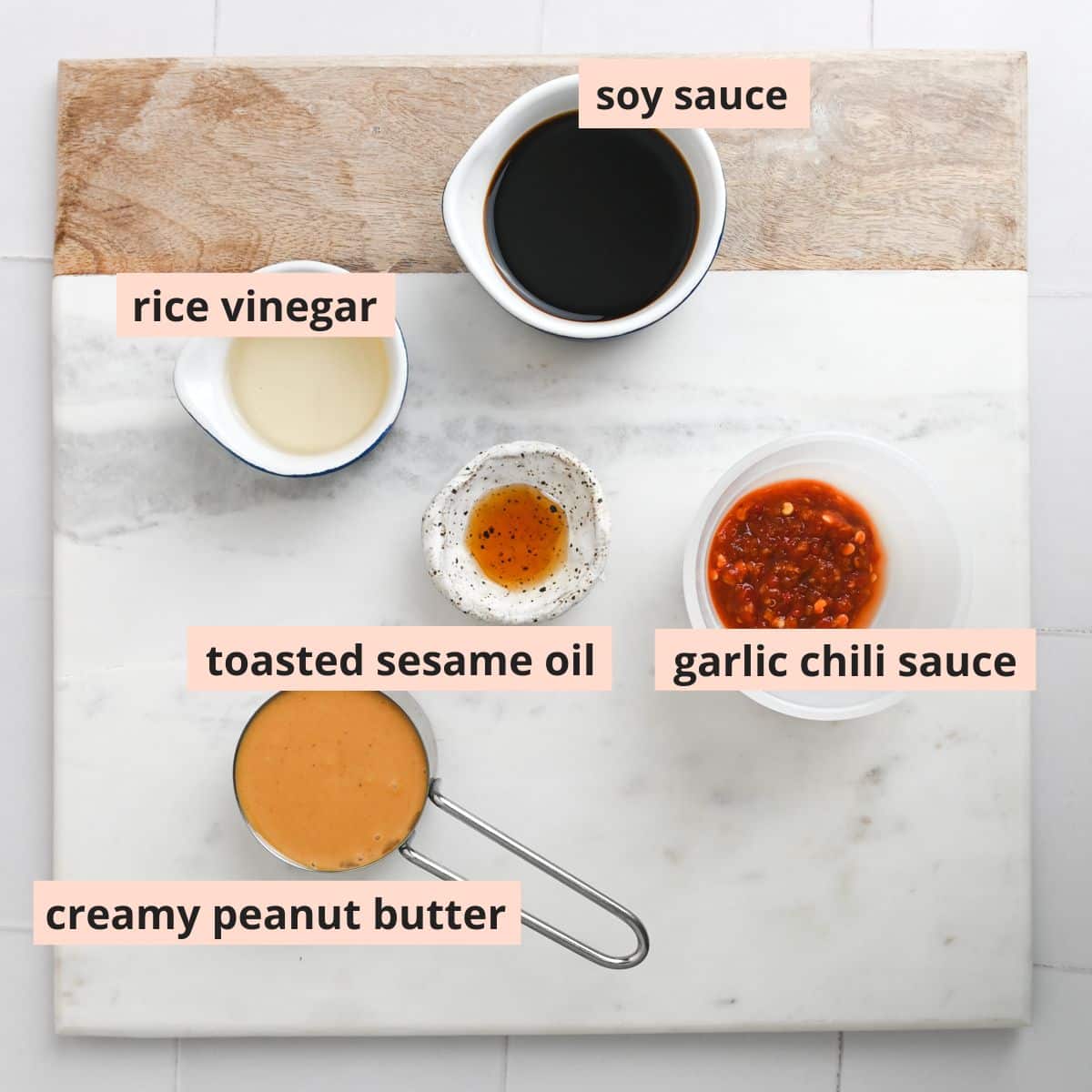
- Peanut butter: I usually use natural creamy peanut butter, but any kind of peanut butter works with a few modifications. See the sections below for tips.
- Soy sauce: I prefer using reduced-sodium soy sauce in sauces because the saltiness from soy sauce can really overpower the sauce. If you only have or just prefer using regular soy sauce, just start with a smaller amount (2 tablespoons) and adjust to taste.
- Rice vinegar: This adds a little bit of acidity. If you don't have rice vinegar, white vinegar or lime juice are the best substitutes.
- Toasted sesame oil: A little bit goes a long way with this ingredient. This adds a rich, toasty flavor to the sauce.
- Garlic chili sauce: This adds garlic and a little bit of heat. I use Huy Fong brand, which isn't super spicy. Do note that spiciness varies very widely by brand, so I recommend adding this ingredient to taste if using a different brand.
- Water: Add to thin the sauce to desired consistency. Vegetable broth is also a great option, but I only use it when I already have a box open.
Natural vs regular peanut butter
Peanut butter consistency varies widely from brand to brand.
Natural peanut butter tends to be smoother and more liquidy, especially if kept at room temperature. It usually just includes peanuts and salt as the ingredients.
Regular peanut butter, which often includes additional additives to prevent separation, tends to be thicker. It may also include sugar and salt.
The verdict? Add water or vegetable broth to the peanut sauce to thin to desired consistency. I usually don't need to add any water when using natural peanut butter. Regular peanut butter is thicker and may be more difficult to stir at first.
Creamy vs. chunky peanut butter
There isn't a huge difference between the volume/consistency of creamy and chunky peanut butter. They are generally interchangeable in savory recipes.
Chunky peanut butter yields a chunky peanut sauce because of the chopped nuts. If this is fine with you, then it's fine with me!
How to make
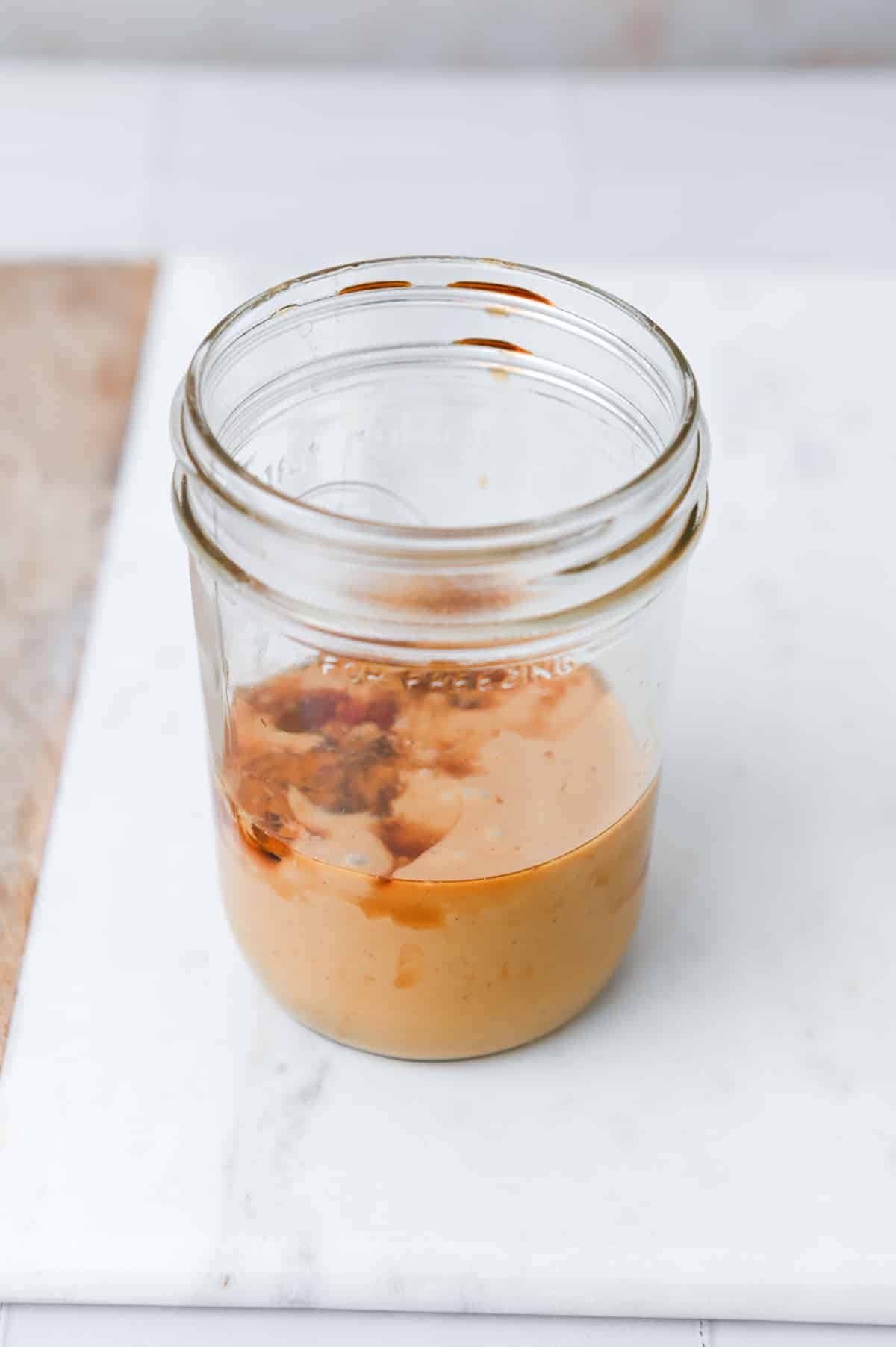
I like to use pint-sized mason jars and mini whisks to make sauces like this.
To make this stir fry peanut sauce, simply whisk together all ingredients in a small jar or bowl. I recommend starting with just 2 tablespoons of soy sauce and adjusting to taste to avoid over-salting the sauce.
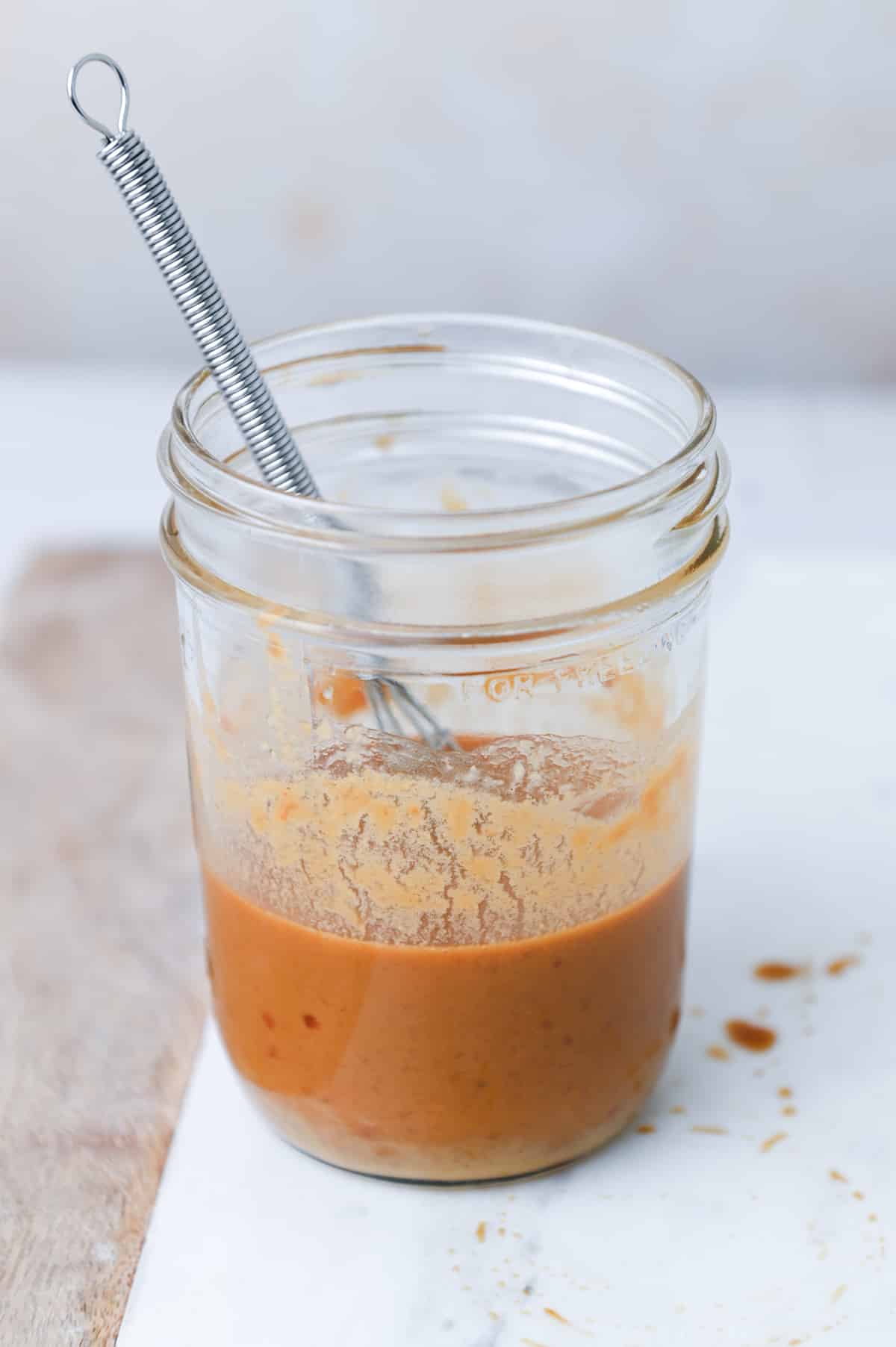
Add water 1 tablespoon at a time to thin the sauce to desired consistency. I aim for a smooth, pourable consistency similar to salad dressings.
Tips and variations
- If using this sauce in a stir-fry, wait to add it to the pan until the very end of cooking. Toss the sauce with noodles/rice/veggies/etc. and let warm in the pan for just 1-2 minutes.
- Saltiness: I prefer using reduced sodium soy sauce in peanut sauce. This contributes the same depth as regular soy sauce but cuts back on the overall saltiness.
- Spiciness: Garlic chili sauce can add a lot of spice, depending on the brand used. For extra spice, try adding 1 tablespoon (or more!) sriracha or red chili flakes.
- Doubling the recipe: This recipe can easily be doubled, tripled, cut in half, etc.
- Using other nut butters: Any variety of nut butter works, but of course the flavors will vary. I use a similar recipe to make my almond butter stir fry.
- Nut-free option: Try sunflower seed butter or tahini for a nut-free option.
- Gluten-free option: Use an equal amount of tamari for a gluten-free peanut stir fry sauce. Coconut aminos also work, but add a touch of sweetness to the sauce.
Storage
- Keep leftover peanut sauce refrigerated in a closed container. It is best within a week.
- Peanut sauce/peanut butter thickens when refrigerated. To thin, let rest at room temperature or whisk in 1-2 tablespoons of water.
- Freezing: Peanut sauce freezes well. Freeze in an air-tight freezer container for up to 3 months. Let thaw overnight in the fridge before using.
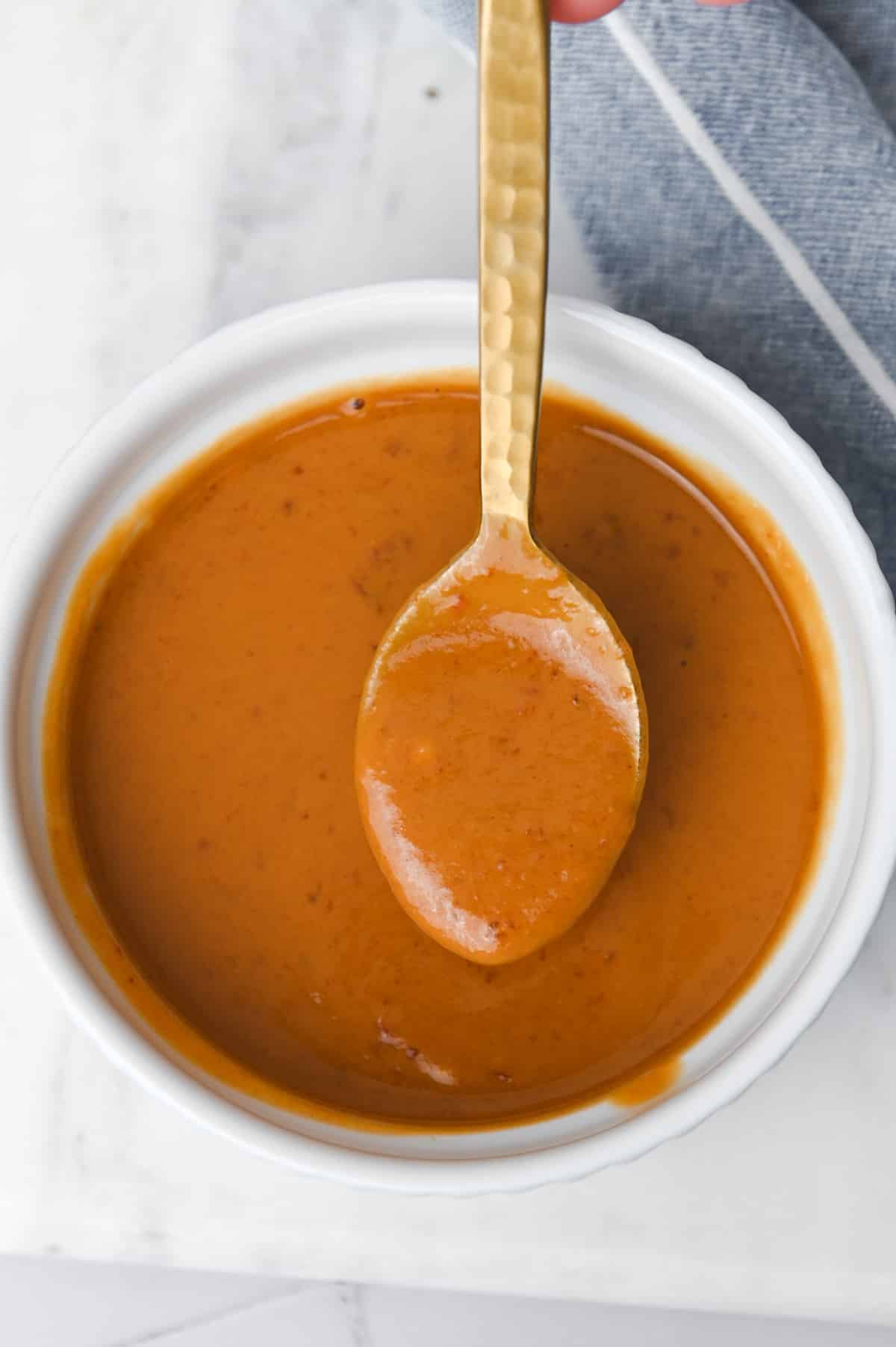
Looking for similar recipes?
Did you try this recipe? You can leave a star rating in the recipe card or a review in the comments below. Or check out my new cookbook and keep up to date with my YouTube, Instagram, TikTok, or newsletter!
📖 Recipe
Want to Save This Recipe?
Enter your email & I'll send it to your inbox. Plus, get great new recipes from me every week!
By submitting this form, you consent to receive emails from Cozy Peach Kitchen
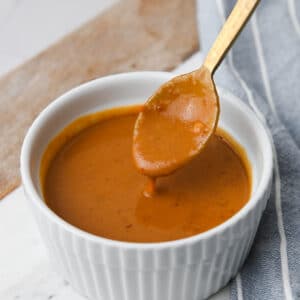
Peanut Stir Fry Sauce
Ingredients
- ⅓ cup creamy peanut butter see note#1
- 2-4 tablespoons reduced sodium soy sauce see note #2
- 2 tablespoons rice vinegar
- 1 tablespoon garlic chili sauce see note #3
- 1 teaspoon toasted sesame oil
- ¼ cup water or vegetable broth as needed
Instructions
- In a small bowl or jar, whisk together ⅓ cup peanut butter, 2 tablespoons soy sauce, 2 tablespoons rice vinegar, 1 tablespoon garlic chili sauce, and 1 teaspoon toasted sesame oil.
- Whisk together until smooth. Taste for soy sauce. Add the additional 1-2 tablespoons if desired.
- Thin to a smooth, pourable consistency by adding water or broth 1 tablespoon at a time. If using a natural peanut butter, you may not need to add any water. Regular peanut butters tender to be thicker and need water for thinning.
- Taste for salt and heat (garlic chili sauce). Enjoy!
Video
Notes
- Peanut butter: Any kind of peanut butter works, but natural peanut butter tends to be more liquidy than regular, which is why I recommend adding water/broth to taste.
- Soy sauce: I use reduced-sodium soy sauce for more control over saltiness, but regular soy sauce or tamari also work. Start with just 2 tablespoons of soy sauce to avoid oversalting the sauce.
- Garlic chili sauce: Spiciness varies widely by brand. I use Huy Fong. Adjust to taste or add 1 tablespoon sriracha instead.
- This recipe makes ¾ to 1 cup of peanut sauce. It makes 1 cup of sauce if using all of the ¼ cup of water.
- Keep refrigerated for up to a week and freeze for up to 3 months. Let thaw overnight in the fridge before using. The sauce will thicken when refrigerated. Just add water to thin.




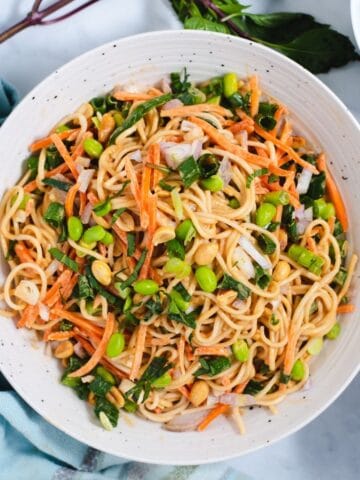
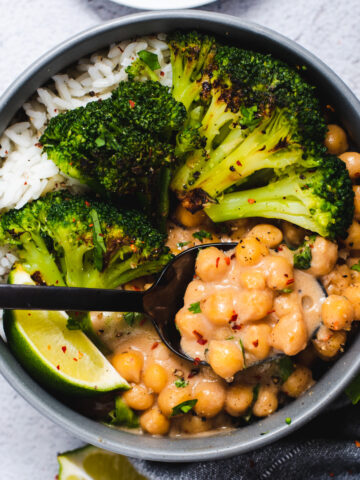
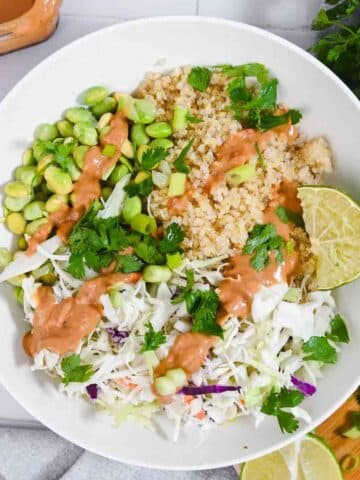
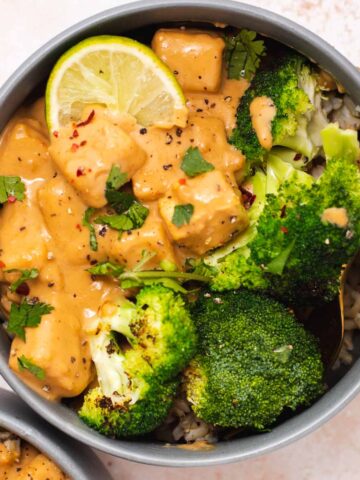
Shannon
This recipe is amazing but a tiny bit bland. I added fresh garlic, ginger and a few drops of stevia and it was absolutely wonderful !
Maggie
My stir fry dish went from everyone enjoys it to everyone is obsessed with it. The only problem - no leftovers for lunch the next day.
Cassidy Reeser
I love to hear it! 🙂
Fera
(I forgot my star rating in my first review)
Tasty, easy to make sauce with depth to it. You really get to taste the peanut butter first, then soy sauce afterwards, then finally the garlic chili sauce. Family enjoyed. I used this for a rice-veggie stir fry, and doubled the sauce recipe as someone who prefers a saucy stir fry rather than the ingredients soaking up all the sauce.
I feel as though this sauce might pair better with a noodle-based stir fry, but that might just be my preference as an avid peanut-based noodle dish lover. No complaints from anyone about the rice dish, though. Used low sodium soy sauce. Thank you!!
Cassidy Reeser
Thanks for the thoughtful review! 🙂